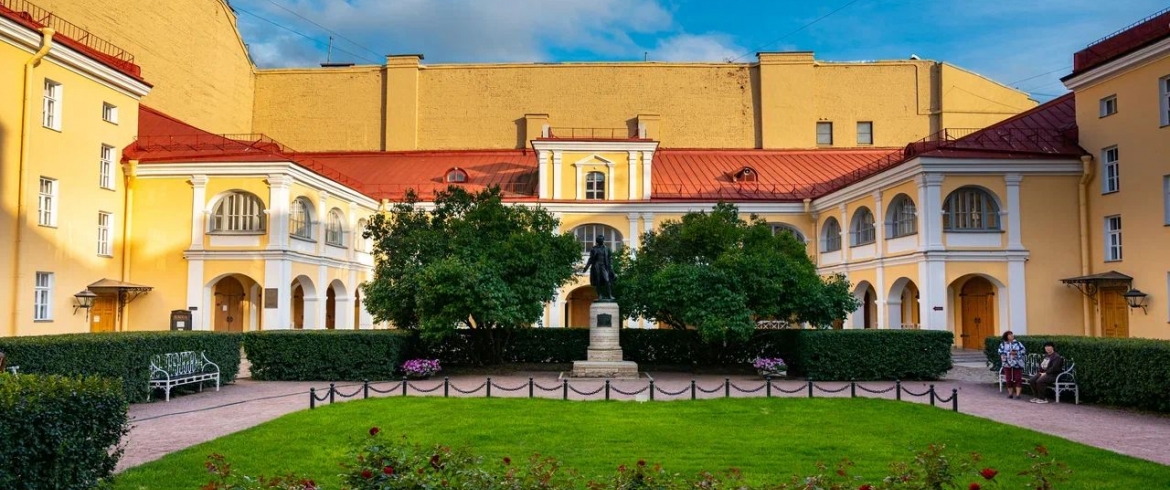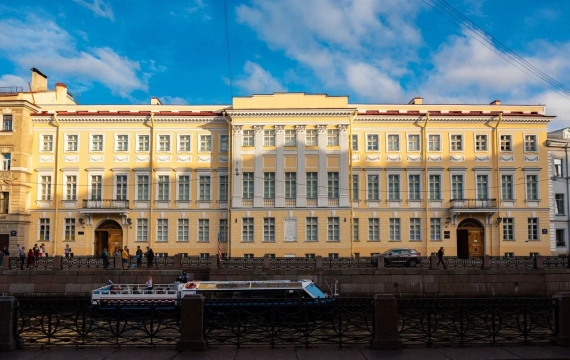Literary St. Petersburg

Start
Moika River emb., 12
Travel time
about 1 hour (at a calm pace, excluding museum visits)
Length
4,8 km
Finish
Kuznechny Lane 5/2
theme routes
What is this route?
On the route through the literary places of the historical center of St. Petersburg, you will find addresses related to the life and work of the most famous St. Petersburg writers of the XIX-XX century - from A.S. Pushkin and F.M. Dostoevsky to Joseph Brodsky and Sergei Dovlatov.
What can you expect?
The starting point of the route is perhaps the most famous literary address, not only in St. Petersburg, but throughout Russia, - Pushkin Museum-Apartment on Moika 12.
After paying tribute to the great Russian poet, go to the embankment of the Griboedov Canal to house 9, where you will be transported a century back. The history of the house is associated with the names of Mikhail Zoshchenko, Benjamin Kaverin, Nikolai Zabolotsky, Eugene Schwartz. Today the State Literary Museum "XX Century" is working here.
Through the Griboedov channel - back to the house of Adamini. In the 1830s, Baron P.L. Schilling von Kanstadt, the inventor of the telegraph, lived on the corner of the Moika and the Field of Mars., and Pushkin, Krylov and Zhukovsky were his guests. At the beginning of the 20th century, the Adamini house became a center of attraction for many famous figures of literature and art of the Silver Age, and in the second half of the 20th century, such famous writers as Yuri German (and his son, director Alexei German), Yakov Gordin, Nina Katerli lived here.
Behind the Field of Mars, the Engineering (Mikhailovsky) Castle rises. In the XIX century, it housed the Main Engineering School, where the future great Russian writer Fedor Dostoevsky studied in 1838-1843.
On the other side of the Fontanka - the notorious house of the Third Branch. Many progressive-minded people in Russia have experienced the heavy hand of a political investigation. In 1840, young Herzen was brought here for "sedition" in a private letter. In April-May 1847, Taras Shevchenko was sitting here, and in April 1849, Dostoevsky was arrested along with members of the Petrashevsky circle.
Along Pestel Street - to the house of Muruzi. The names of such writers as Leskov, Merezhkovsky and Gippius are associated with it, and, of course, the name of the Nobel Prize winner poet Joseph Brodsky, which is reminded of by a plaque on the facade.
Two more literary museums are located on Liteiny - this is a museum of N.A. Nekrasov on the corner with the street named after him and the museum of Anna Akhmatova in the Fountain House. The Akhmatova Museum regularly hosts exhibitions, poetry readings, and creative meetings. Take a walk in the garden of the Fountain House, where interesting events are also frequent.
On the corner of Nevsky and Vladimirsky Prospects, pay attention to the fashionable Radisson Hotel. From 1964 to 1989, the famous bohemian cafeteria Saigon was located here, which was visited by Brodsky and Dovlatov, Oleg Grigoryev and Boris Grebenshchikov, Victor Tsoi and many other musicians, artists, poets, and representatives of the Leningrad underground.
Turning from Nevsky to Rubinstein Street, you will soon see a constructivist house with the intriguing title “The Tear of Socialism”. Here in the 1930s there was an experimental commune of engineers and writers, where, among other things, Olga Berggolz, the “siege muse of Leningrad” lived.
Further along Rubinstein - to the house where Sergei Dovlatov lived. You will recognize it immediately: a monument to the writer is erected near the house.
The final point of your trip is Kuznechny Lane, the Literary and Memorial Museum of F.M. Dostoevsky. In this apartment, the great Russian writer lived the last years of his life and created the novel The Brothers Karamazov, and today exhibitions and literary evenings are held here. There is even a theater in the house.

















